
| Starting price | $9.99/mo |
|---|---|
| Free trial | 7-day |
| Free version | No |
Choosing the right development software is essential to speed up your workflow, improve team collaboration, write better code, and help you ship products faster.
Today, we’ve rounded up the top development tools for 2025.
Here are our top picks for development tools this year, carefully chosen based on performance, innovation, versatility, and developer feedback.

| Starting price | $9.99/mo |
|---|---|
| Free trial | 7-day |
| Free version | No |
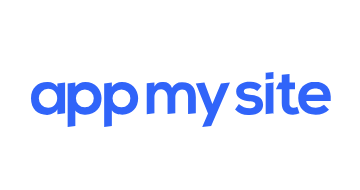
| Starting price | US$ 9 |
|---|---|
| Pricing model | Pay Per App |
| Free Trial | Yes |
| Free Version | No |

| Starting price | $49/month |
|---|---|
| Pricing model | Subscriber based |
| Free Trial | Yes |
| Free Version | No |
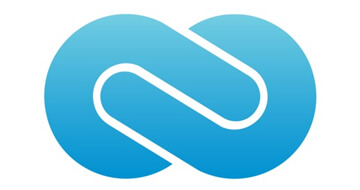
| Starting price | $1000/mo |
|---|---|
| Pricing model | Per User (storage space) |
| Free Trial | 14-day |
| Free Version | No |
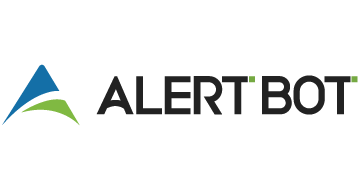
| Starting price | $110/mo |
|---|---|
| Free trial | Yes, 14 days |
| Free version | No |

| Starting price | $18/mo |
|---|---|
| Pricing model | Per User |
| Free Trial | No |
| Free Version | Yes |
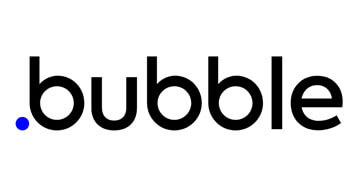
| Starting price | $29/mo |
|---|---|
| Pricing model | Per application |
| Free Trial | No |
| Free Version | Yes |
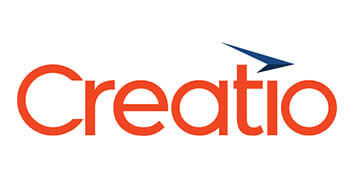
| Starting price | $25/mo |
|---|---|
| Pricing model | Per User |
| Free Trial | 14-day |
| Free Version | No |

| Starting price | $52.99/mo |
|---|---|
| Pricing model | Per User |
| Free Trial | 30-day |
| Free Version | No |
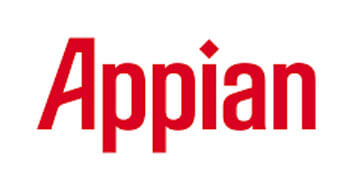
| Starting price | Quote only |
|---|---|
| Pricing model | Quotation based |
| Free Trial | 14-day |
| Free Version | Yes |
Why We Picked It: AppMySite is a no-code app builder that allows anyone to create and publish native Android and iOS apps without technical skills.
With an intuitive drag-and-drop interface, you can easily design, customize, and launch fully functional apps.
| Pros | Cons |
|---|---|

Development software refers to tools such as IDEs, code editors, debuggers, testing frameworks, and DevOps tools that help developers write code, test, debug, and deploy digital products such as apps and websites.
These tools streamline the development process, simplify coding tasks, and enhance overall product quality.
To develop digital products, developers write code using development tools like code editors or IDEs, which highlight syntax, detect errors, and suggest improvements.
Then they use debuggers to identify and fix bugs in the code. Once the code is correct, they run tests using testing frameworks to verify that the software works correctly and meets all requirements.
If the software passes all tests, developers deploy the application and manage its life cycle using DevOps tools.
These tools help support team collaboration, performance monitoring, version updates, and system scaling.
Without proper development tools and careful planning, building and maintaining reliable software would become more challenging.
Development software helps to facilitate the development process, from writing better code and reducing bugs to testing, collaboration, deployment, and ongoing maintenance.
Here’s how the right software tools can help developers at every stage:
Development software helps you write better, standards-compliant code.
Some tools analyze your code in real-time, spot potential errors, and suggest improvements to ensure higher quality and fewer bugs.
Debugging tools make it easy to detect and resolve errors early in the development cycle. This speeds up the process, reduces downtime, and improves overall user experience.
Frameworks like Flutter, React Native, and Electron allow you to build once and deploy across multiple platforms without rewriting code for each one. This saves time and ensures consistent performance and UI across devices.
Manual development processes are often slow and prone to errors. With CI/CD pipelines, you can automate code validation, integrate APIs, run tests, and deploy updates efficiently. This reduces bugs, shortens release cycles, and boosts delivery speed.
Collaboration is critical in multi-developer environments. Tools like version control systems and code review platforms help teams manage changes, give in-line feedback, track revisions, and maintain code consistency, keeping everyone aligned throughout the project.
To choose the right software, you need to understand which features align with your workflow and project needs.
Here are some basic and advanced development features to consider:
Modern development software includes code editors that support multiple programming languages. These editors simplify the development process with features like smart suggestions, auto-completion, and automatic formatting, boosting productivity and reducing typos.
Syntax highlighting is an editing feature that highlights different parts of your code in different colors, making it easier to spot errors, improve code readability, and understand the structure and logic of your code.
Debuggers allow you to set breakpoints, inspect variables, and run code step-by-step. This helps identify and fix bugs early, improves software quality, and prevents performance issues down the line.
Development tools enable you to integrate with other services, such as databases, APIs, or cloud platforms, without leaving your environment. These integrations streamline your workflow and reduce the need to switch between tools.
With systems like Git, you can track changes, revert to earlier versions, and collaborate with your team. Version control provides a complete history of project changes on what was modified, when, and by whom, ensuring transparency and control.
Live preview is a feature that lets you see real-time changes as you code or design, allowing you to visualize how your edits affect your final result without refreshing or compiling your work every time.
Integrated testing frameworks let you write, run, and manage automated tests directly from your IDE.
These tools validate functionality, identify bugs early, and improve overall performance.
They also increase development efficiency, reduce costs, and enhance user satisfaction as your project scales.
AI-assisted coding is transforming how developers build applications. These tools can suggest lines of code, automate repetitive tasks, detect and correct errors, and even generate complete code snippets, making development faster and more efficient.
Modern development environments feature autocomplete tools that help you code faster and with fewer errors.
These tools scan your entire codebase and provide context-aware suggestions, saving time and reducing typos.
Containerization tools like Docker and Kubernetes let you package your application along with its code, libraries, and dependencies so it runs consistently across different systems or cloud platforms, making scaling applications much easier.
Cloud sync allows you to store and access your code from any device, reducing the risk of data loss. It ensures your work is backed up, version-controlled, and accessible for collaboration—anytime, anywhere.
Development analytics provide insights into your workflow, including coding time, bug tracking, and development milestones. These insights help you measure progress, make informed decisions, improve team performance, and stay on schedule.
API testing helps verify that your application functions as expected. By testing APIs directly within your development environment, you can detect errors, validate integrations with external services, and ensure security and performance.
This streamlines the development process, minimizes bugs, and enables faster delivery of reliable, high-quality software.
Collaboration workspaces allow multiple developers to work on the same codebase in real-time or asynchronously.
They improve team productivity, reduce miscommunication, and streamline the development process, especially for remote teams.
Choosing the right development software is essential for the scalability and success of any project. Here’s a quick checklist to help you choose the right development software:
Start by defining the nature of your project. Whether you’re building a web app, mobile app, backend system, or a full-stack solution, ensure the software supports the necessary frameworks, tools, and runtime environments.
Your workflow and team size should influence your software choice. Solo developers or small teams benefit from lightweight, user-friendly, and customizable tools.
For larger teams working within Agile, Scrum, or DevOps frameworks, look for more robust solutions that support task tracking, version control, sprints, and CI/CD pipelines.
Choose a tool that aligns with how your team works, enabling smooth collaboration, code reviews, and transitions across development stages.
Ensure the software integrates well with tools already in your tech stack. If your team uses GitHub, Jira, Slack, or AWS, look for a development environment that supports seamless integration with these platforms.
When tools work together effortlessly, your workflow stays efficient, allowing the team to focus on building rather than fixing compatibility issues.
Budget is a key consideration, especially when scaling. Free or open-source tools can work well for individuals or early-stage startups but may lack advanced features or support.
Paid solutions often offer better scalability, dedicated support, and enhanced capabilities. Evaluate the total cost, including licensing, training, and add-ons, to ensure the software delivers value while being cost-effective.
Every project has unique requirements. You want to choose software that’s flexible enough to adapt as your needs evolve.
Look for tools that allow you to customize workflows, interfaces, and scripts, or integrate third-party add-ons that improve productivity.
Software that lets you modify and extend its capabilities will serve you better as your project evolves or as your team’s needs grow.
Start by clearly defining what your project requires. Consider the scale, programming languages, frameworks, performance, security needs, and deployment method.
This early assessment helps you choose the right stack and avoid configuration issues later.
Once your project’s needs are clear, choose an operating system that integrates with your development stack and offers long-term stability:
Once your OS is set, configure your Integrated Development Environment (IDE). Whether it’s VS Code, PyCharm, IntelliJ, or Eclipse, take the time to set it up right.
However, if you’re a beginner, Sublime Text or Atom may be suitable, especially if you prefer lightweight editors for simplicity.
Then configure it to your preference:
Version control is essential, even for solo projects. Set up a Git repository and connect it to a remote host like GitHub, GitLab, or Bitbucket to:
Create a .gitignore file to exclude build artifacts, environment files, and other sensitive or unnecessary data from your repository.
Extensions and plugins enhance your development workflow. Install an extension manager to easily install, update, or disable tools as needed. Depending on your project, you might need:
Now, bring everything together.
Lastly, document the setup process. A quick README can save hours for future you—or any new developer joining the project.
Even with the rise of AI coding assistants, software development remains complex and costly.
A survey shows 20% of projects fail, and 52% face major challenges, causing businesses to adopt low-code and no-code platforms.
These tools make development easier and faster without the need for professional coding skills, reducing overall development costs.
Research also reveals search interest for “low-code” is up 286%, and “no-code” has surged 950% in five years.
Large enterprises are embracing the trend, with KPMG reporting a 100% positive ROI from low-code adoption.
The number of executives prioritizing these platforms for automation has also nearly tripled, making it a trend developers and businesses can’t ignore.
Developers are increasingly embracing Rust for its speed, memory safety, and performance, making it ideal for building scalable solutions.
Tech companies like Amazon, Microsoft, Facebook, and Dropbox already use Rust, and in a recent survey by StackOverflow, .NET developers voted Rust as the “most desired language” to learn.
Over the last five years, the search interest in “Rust” has increased by 48%, and it also jumped 18 spots on the TIOBE index last year.
As more businesses seek faster, safer, and more resource-efficient software, developers who are skilled in Rust will gain a competitive edge and unlock valuable career opportunities.
Choosing the right development software in 2025 comes down to your project scope, the tech stack required for development, and, importantly, your budget.
In this article, we have compiled the top three development software, with Visual Studio Code leading as the best all-around option.
It’s open source, runs fast, supports a wide range of programming languages, and offers powerful extensions that fit into nearly any workflow, making it a go-to tool for many developers.
When it comes to mobile development, Flutter stands out. It lets you build high-performance apps for multiple platforms using a single codebase.
If you’re new to coding and need assistance, Cursor AI provides autocomplete suggestions and edits that speed up development.